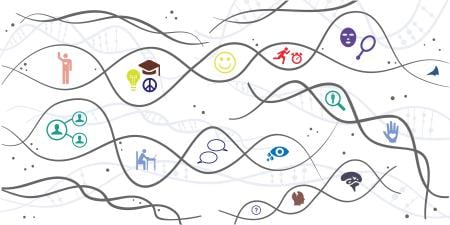In 1910 Abraham Flexner exposed the appalling quality of North American medical education in his seminal report Medical Education in the United States and Canada.1 Flexner, a trained educator—not a physician—visited the 155 medical schools of that time and found students who were poorly prepared academically attending sterile lectures and learning patient care in loosely organized apprenticeships. Medical training was largely unscientific and divorced from hands-on clinical experience. Johns Hopkins was one of few medical schools that were exceptions. There, led by the great clinician-educator William Osler, students worked under the supervision of clinician role models at the site of patient care—the bedside. As Osler himself said, "Medicine is learned at the beside and not in the classroom."2
The Flexner Report motivated radical change and a remarkable transformation in medical education. Dozens of proprietary, nonacademic medical schools vanished, and American medical schools began to adopt scientifically rigorous education paired with supervised clinical training in academic teaching hospitals. In an age of acute medical disease, this model was rational, and American medical education came to be widely acknowledged as the best in the world.
Yet, despite the stature that US medical training commands throughout the world, it again finds itself at a crossroads at the beginning of the 21st century. Though prospective trainees now enter medical school with solid undergraduate credentials, many within and outside the profession feel that physicians emerge without the full complement of knowledge, skills, and attitudes necessary for ideal patient care. As a result, we must re-examine how medical education occurs and how faculty should best provide the training that is needed. The principle that Osler espoused—that medical education occurs at the patient's bedside—is as valid today as it was a century ago. But the circumstances of medical care have changed since Osler made his observation. Changes in demography, epidemiology, and technology have radically altered the patient-physician encounter and dramatically shifted the dominant site of patient care. Medical educators must reapply the Oslerian principle to modern curricula in order to produce physicians who are optimally prepared to meet the public's expectation for safe medical care that is patient-centered and cost-effective.
What are the implications of these changes in medicine for medical education?
As a result of public health victories in the 20th century and a "baby-boom" following World War II, the US population is becoming older. Racial and ethnic diversity is also increasing. These demographic changes have resulted in an epidemiological shift from a population plagued by acute episodes of illness to one that is more often burdened by numerous and often chronic conditions that sometimes produce disability. Parallel to this demographic and epidemiological shift has been a remarkable explosion in medical technology and consumer awareness. Since the 1970s, American's expectation of medical quality, assisted by ubiquitous medical information available through electronic formats and other sources, has grown. Consequently, patients exercise personal choice in medical care more than ever before. Furthermore, delivery of care—driven by economic incentives toward cost-effectiveness and propelled by the promise of more accessible diagnostic and therapeutic technology—occurs most often in ambulatory settings, many times in community-based practices begun by trainees of parent academic medical centers. The result is that most patient care decisions, evaluations, and treatments occur, not in hospitals, but in offices. Moreover, the vast majority of patient encounters happen in community-based practices affiliated with non-academic medical centers and concern management of chronic medical conditions. So where would William Osler educate his trainees?
The location is obvious. The ambulatory setting, though not the exclusive site of care, is the better place for much of today's clinical learning. Making the change from the traditional hospital setting, however, is not simple. In addition to logistical and financial hurdles, training medical students and postgraduates in community-based settings requires recruitment of a cadre of community-based faculty who are conversant with the goals of modern medical education, broadly categorized by the American College of Graduate Medical Education as:
- Patient care,
- Medical knowledge,
- Practice-base learning and improvement,
- Interpersonal and communication skills,
- Professionalism,
- Systems-based practice.
What attributes make community-based practice highly suitable for achieving these goals? Here the form of clinical medical education should follow directly from the functions that community-based practices are developing in response to the demographic, technological, and financial imperatives that medicine currently confronts. Consider the following characteristics of ambulatory practice that make it ideally suited for meeting this century's educational imperative.
Disease Prevalence
Trainees exposed exclusively to hospitalized patients in academic medical centers often develop a distorted sense of disease prevalence. Rare diseases seem more common than the conditions most physicians routinely encounter. In the typical community-based setting, the medical students and residents are able to gain experience evaluating and treating common medical conditions, while learning another important skill: how to properly incorporate the low pre-test probability for uncommon illnesses into diagnostic and screening strategies while recognizing and managing common conditions.
Disease Stage and Severity
Many chronic conditions develop gradually over time, usually with a preclinical stage that only later gives rise to symptoms or disability. Students exposed to advanced-stage disease in hospitalized patients do not have the opportunity and satisfaction of discovering medical problems early when symptoms are subtle and prevention is most likely to be rewarded. Furthermore, detection and management of chronic disease, before symptoms become glaring, requires physicians to rely on sensitive, fully disclosed, and thorough patient history and physical skills. Under the supervision of office-based faculty, students can learn to enhance these skills without over-reliance on medical technology.
Longitudinal Care
With ever-shortening length of stay for hospitalized patients, trainees no longer have the luxury of watching the presentation and evolution of medical illness in the way that one could on hospital wards of Osler's time. Only through longitudinal observation over multiple office visits are students likely to understand how patients respond to treatment. Other important principles such as watchful waiting and regression to the mean are more easily appreciated when students follow patients over time.
Organizing Care Within a System
Organizing ambulatory care is challenging in ways that differ from organizing complex care within the hospital. For instance, sequencing diverse specialists and studies for an individual patient in the ambulatory setting requires special judgment and skill. Yet this skill, which sometimes presents an alternative to hospitalization, has benefits, such as reducing exposure to hospital-acquired infection and preserving a patient's comfort at home. Furthermore, ambulatory practice requires physicians to develop patient care plans that are consistent with the patient's resources and priorities within a system of care.
Practice Improvement
To survive in an increasingly competitive environment, all practices must implement quality improvement. During a longitudinal experience with an ambulatory practice, trainees can not only learn but also contribute to new or ongoing quality improvement projects. In fact some training programs help medical students develop practice improvement projects as a means of adding value to the practice while at the same time learning the process.
Emphasis on Patient Comfort, Function, and Independence
Teaching students to focus on patient comfort, function, and independence puts medical care into terms that are meaningful to patients and their families. Furthermore, students exposed only to acute disease management sometimes come to view medical problems that lack resolution as inherently unsatisfying to treat. Chronic care management in the ambulatory setting that successfully improves the patient's comfort, function, and independence accentuates the importance of this dimension of patient care and can be as satisfying to witness as the resolution of an acute medical illness.
Patient-Physician Communication and Professionalism
The ambulatory setting depends, perhaps more than the acute hospital environment, on effective patient-physician communication, since ambulatory patients who are unsatisfied with their care vote with their feet. The office-based setting allows students to practice communicating with large numbers of patients under the supervision of a preceptor and role model. A busy practice creates ample opportunities for preceptors to observe students interacting with patients and their families and provide feedback on performance.
Mastery of History and Physical Skills
In the ambulatory-based practice, where technology is less readily available than in the hospital setting, physicians learn to rely on their history taking and physical exam skills. Clinical educators can help trainees develop these proficiencies by implementing focused, time-efficient techniques, such as the One-Minute Preceptor (first described by Neher, Gordon, Meyer, and Stevens).3
What can ambulatory-based preceptors gain? In my experience, much. In addition to the intangible benefit of helping a junior colleague master new knowledge and skills and become professionally acculturated, clinical educators in office practice enjoy the following benefits:
- Expanded collegial contacts with learners and colleagues in academic medical centers,
- Opportunity to recruit future trainees into practice,
- Enhanced practice prestige,
- Continued learning on their own part, and
- Typically, enhanced practice resources such as electronic access to medical school libraries.
Both the need to educate a new generation of physicians at the point of patient care and the need to train physicians who are responsive to a changing population argue for relocating a significant portion of medical education into the ambulatory setting. The benefits will not be limited to trainees and their academic institutions. Teaching, perhaps the most potent form of continuing education, will strengthen community-based physicians and link practical patient care to the wellsprings of academic medical centers.
References
- Beck AH. The Flexner Report and the standardization of American medical education. JAMA. 2004;291(17):2139-2140.
-
Silverman ME, Murry JT, Bryan CS, eds. The Quotable Osler. Philadelphia, Pa: The American College of Physicians; 2003:18.
- Neher JO, Gordon KC, Meyer B, Stevens N. A five-step "microskills" model of clinical teaching. J Am Board Fam Pract. 1992;5(4):419-424.



